Mark June 26th as an auspicious day, because Arduino has announced their new UNO R4! SparkFun is pleased to help bring you these two new boards, as well as a new kit built to support these two new boards, the UNO R4 WiFi and the UNO R4 Minima. The Arduino UNO R4 is the next generation of Arduino, and each version packed with new features and improvements that make it the most powerful and versatile Arduino yet.
The new horizon for makers
Your user-friendly, accessible UNO just took a quantum leap forward: Arduino UNO R4 is a 32-bit microprocessor offering more speed, memory, connectors and connectivity options than any version of the board before. Out of this world, and into the future.
Set a new standard
The UNO R4 preserves the standard form factor, shield compatibility, 5V power supply and robustness of the UNO range while offering no less than a 32-bit Cortex® M4 and a 15-fold increase in memory. The best prototyping and learning tool for anyone just got better.
Double up on innovation
Choose between the lightweight UNO R4 Minima and the full-fledged UNO R4 WiFi depending on your skill level, general budget and the project you have in mind. Both include limitless ease of use and the support of our stellar community.
The UNO universe expands with the Arduino UNO R4 WiFi: the same industry-standard form factor at 5V operating voltage, but with the enhanced performance of a RA4M1 32-bit microcontroller by Renesas with ESP32-S3-MINI coprocessor – for increased computational power, memory and speed – as well as Wi-Fi® and Bluetooth® connectivity, a 12 x 8 LED matrix, and a Qwiic connector.
Arduino’s continued commitment to making technology accessible to everyone was the inspiration behind the Arduino UNO R4 Minima: the new addition to the brand’s community-supported ecosystem offers powerful technology at an affordable price. Packing more computational power, memory and speed in the familiar form factor of the UNO at 5V operating voltage, it allows users to easily upgrade projects made with the UNO R3 or the Leonardo. What’s more, thanks to a RA4M1 microcontroller by Renesas, it can leverage two new off-the-shelf peripherals, CAN BUS and (12 bit) DAC: perfect for automation or audio projects.
The SparkFun Arduino UNO R4 WiFi Qwiic Kit is a great way to get started with Arduino and the Qwiic-connect system. This kit includes everything you need to build a WiFi-enabled project, including an Arduino UNO R4 board, an assortment of Qwiic-enabled sensors and input boards, a Qwiic OLED Display, and a variety of other components to get you connected. Hooking up a handful of inputs and outputs to a Arduino UNO R4 has never been so easy.
We're pretty excited to carry these new boards from Arduino, as well as devlop the first kit in our catalog to use them! Please keep in mind that the Arduino UNO R4 WiFi and the SparkFun Arduino UNO R4 WiFi Qwiic Kit are available for pre-order (the Minima is available to ship today, though!). We hope to start shipping these Arduino UNO R4 products within the next few weeks. Orders will be fulfilled in the order they are received. If you are ordering these products alongside "Live/in-stock" products and want to receive these products ASAP, be sure to designate your order for split shipments in checkout.
The Arduino UNO R4 is the perfect platform for anyone who wants to create amazing things with electronics. It's easy to use, powerful, and versatile, making it the perfect choice for beginners and experienced makers alike. As always, we can't wait to see what you make. Shoot us a tweet @sparkfun, or let us know on Instagram, Facebook or LinkedIn. Have a great rest of your Monday and we hope you enjoy these new Arduino products!
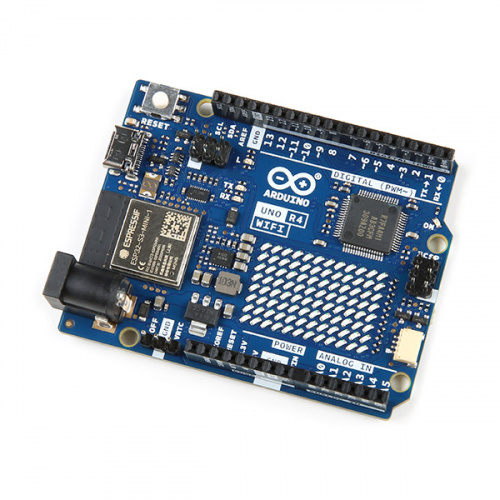
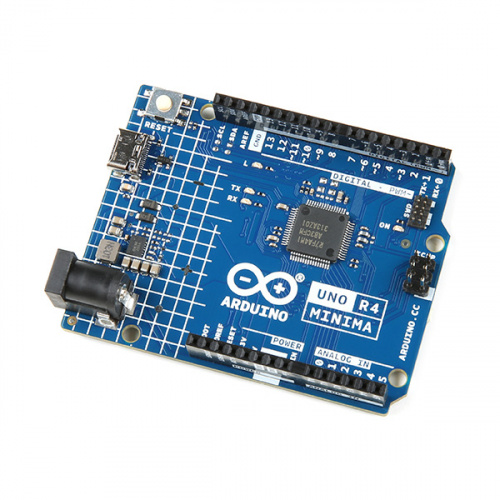
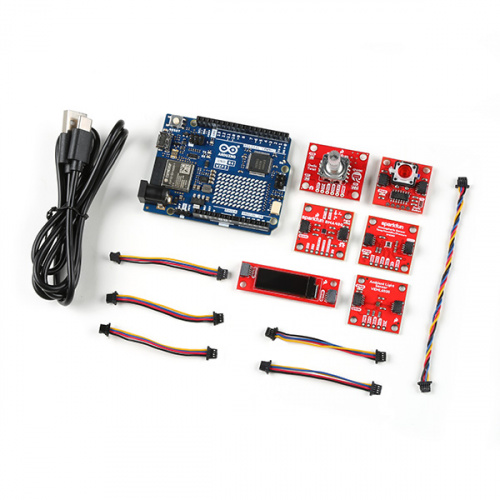
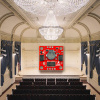
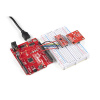






I'm glad to see the wider power voltage range on both of these -- there's something to be said for being able to connect to a [so-called] 12V battery [fully charged lead-acid batteries usually provide 13.8V]. Also, for the Arduino UNO R4 WiFi I'm glad to see that it addresses one of my perennial "hot-button" issues: an RTC with battery backup. (I haven't dug into the Renasis data sheet to verify that it's an actual Renesis datasheet to verify that it's an "actual" Real Time Clock.) I'm also impressed that it has a Qwiic connector, though IMHO it would have been a good idea for Arduino to include it on the Arduino UNO R4 Minima too.
I am assuming that these don't have any EEPROM, as that's not listed in the features. (Yes, I'm aware that there are libraries available to "fake it" by using some of the Flash memory.)
One little side light that I noticed -- it appears from the photos that one of the connector companies has FINALLY made single sockets with that weird "Arduino shield" spacing built in, rather than having to have two separate sockets on each side. Now, if they'd just make "stacking" connectors! :-)
One other thing: I wish that there was a photo of the back of the Arduino UNO R4 WiFi on the page. (The weights would be a nice addition, too... I've done projects where this was an issue.)
Arduino has a pic of the back on their website shop
https://store-usa.arduino.cc/products/uno-r4-minima?selectedStore=us
That link goes to the UNO R4 Minima, which has "back side" photos on the SparkFun website.
This link goes to the UNO R4 WiFi, and you're right, they do include a "back side" photo of it.
A couple of "By The Ways": Both of Arduino's pages include a link to a "DATA SHEET IN PDF". Looking at those, they both specify that there's 8kB of EEPROM. Unfortunately, I didn't spot mention of weight (or mass) on either one. Also of note is that the CAN bus needs an external transciever, and that it uses some D pins so other interfaces (notably SPI) are not usable when CAN bus is used. For the WiFi, it uses an ESP-32 S3, which they do provide a seperate 6-pin header to access (program?) directly. And I had missed in the SF picture that the VRTC (also referred to as "VBAT") connection is on a 3-pin header near the traditional barrel connector.
Again, please note that I have NOT YET read through the Renesis data sheet for this processor (and probably won't have time to do so for several weeks) -- I've looked at enough Renesis data sheets to know that they are NOT an easy read, but DO have an immense amount of information.